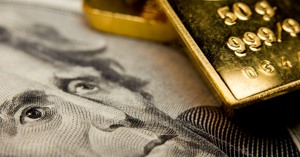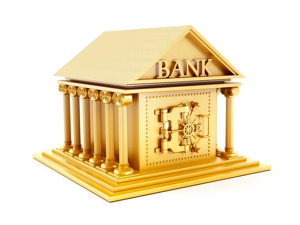Tavex uses cookies to ensure website functionality and improve your user experience. Collecting data from cookies helps us provide the best experience for you, keeps your account secure and allows us to personalise advert content. You can find out more in our cookie policy.
Please select what cookies you allow us to use
Cookies are small files of letters and digits downloaded and saved on your computer or another device (for instance, a mobile phone, a tablet) and saved in your browser while you visit a website. They can be used to track the pages you visit on the website, save the information you enter or remember your preferences such as language settings as long as you’re browsing the website.
| Cookie name | Cookie description | Cookie duration |
|---|---|---|
| tavex_cookie_consent | Stores cookie consent options selected | 60 weeks |
| tavex_customer | Tavex customer ID | 30 days |
| wp-wpml_current_language | Stores selected language | 1 day |
| AWSALB | AWS ALB sticky session cookie | 6 days |
| AWSALBCORS | AWS ALB sticky session cookie | 6 days |
| NO_CACHE | Used to disable page caching | 1 day |
| PHPSESSID | Identifier for PHP session | Session |
| latest_news | Helps to keep notifications relevant by storing the latest news shown | 29 days |
| latest_news_flash | Helps to keep notifications relevant by storing the latest news shown | 29 days |
| tavex_recently_viewed_products | List of recently viewed products | 1 day |
| tavex_compare_amount | Number of items in product comparison view | 1 day |
| Cookie name | Cookie description | Cookie duration |
|---|---|---|
| chart-widget-tab-*-*-* | Remembers last chart options (i.e currency, time period, etc) | 29 days |
| archive_layout | Stores selected product layout on category pages | 1 day |
| Cookie name | Cookie description | Cookie duration |
|---|---|---|
| cartstack.com-* | Used for tracking abandoned shopping carts | 1 year |
| _omappvp | Used by OptinMonster for determining new vs. returning visitors. Expires in 11 years | 11 years |
| _omappvs | Used by OptinMonster for determining when a new visitor becomes a returning visitor | Session |
| om* | Used by OptinMonster to track interactions with campaigns | Persistent |
| Cookie name | Cookie description | Cookie duration |
|---|---|---|
| _ga | Used to distinguish users | 2 years |
| _gid | Used to distinguish users | 24 hours |
| _ga_* | Used to persist session state | 2 years |
| _gac_* | Contains campaign related information | 90 days |
| _gat_gtag_* | Used to throttle request rate | 1 minute |
| _fbc | Facebook advertisement cookie | 2 years |
| _fbp | Facebook cookie for distinguishing unique users | 2 years |
How Does Inflation Affect Gold Prices?

Inflation, characterised by the sustained increase in the general price of goods and services, is a critical economic phenomenon that reverberates across various financial assets. One asset that stands out, particularly in times of inflationary pressures, is gold.
Investors instinctively turn to gold as a hedge against inflation, recognising its enduring intrinsic value and its storied history as a safe haven asset.
To gain a comprehensive understanding of the intricate relationship between inflation and gold prices, let’s delve deeper into the key factors at play.
The Link Between Inflation and Gold Prices

The dynamic interplay between inflation and gold prices is underpinned by several fundamental principles:
1. Gold as a Store of Value
Gold, often referred to as the “currency of last resort,” boasts a centuries-old reputation as a reliable store of value. When the spectre of rising inflation looms, investors instinctively gravitate towards gold as a safe haven asset.
The rationale is simple: as inflation erodes the purchasing power of fiat currencies, gold’s intrinsic value remains steadfast
Consequently, heightened demand for gold in the market naturally exerts upward pressure on its price, causing the price to increase, as investors seek refuge from the erosive effects of inflation.
2. Central Bank Policies
Central banks wield considerable influence over economic dynamics, and their response to inflation can have a profound impact on gold prices. In a bid to counteract the detrimental effects of inflation, central banks often implement measures such as adjusting interest rates in the financial market.

When central banks opt to lower interest rates in response to mounting inflationary pressures, it diminishes the allure of holding cash or bonds. Consequently, astute investors reallocate their portfolios potentially away from the stock market, increasing their exposure to assets like gold bullion.
Unlike cash or bonds, gold doesn’t rely on interest payments for returns, making it an attractive choice during periods of inflation.
3. Market Perception
Investor sentiment plays an equally pivotal role in shaping the relationship between inflation and gold prices. The market’s collective perception of future inflation trends can be just as influential, if not more so, than the actual inflation rates.
In instances where there is a widespread belief that inflation is imminent, investors may proactively invest in gold as a precautionary measure.
This anticipatory rush into gold can drive up its price, reflecting the proactive stance investors take in safeguarding their wealth against the potential ravages of inflation.
4. Complex Dynamics
While the connection between gold and inflation is often portrayed as straightforward, it is far from simplistic. Gold’s price is subject to multifaceted influences, including market sentiment, geopolitical events, and intricate supply and demand dynamics.
On occasion, these myriad factors can exert a more pronounced impact on gold prices than the rate of inflation itself. Therefore, it is essential to recognise that gold’s performance is not solely tethered to inflation but rather is part of a broader economic tapestry.
Factors Influencing Gold’s Response to Inflation

The nuanced response of gold to inflation is shaped by a constellation of factors:
1. Inflation Expectations
Anticipated inflation, often driven by market sentiment and economic data, can exert significant influence on gold prices.
Investors’ perceptions of future inflation trends can lead to heightened demand for gold, regardless of the current inflation rates. In essence, gold becomes a pre-emptive inflation hedge against potential inflation rises and increases.
2. Monetary Policy
Central banks’ decisions concerning interest rates and money supply can directly impact the value of fiat currencies.

The resultant fluctuations in currency values subsequently ripple through to the price of gold. Central banks’ policies, therefore, are a pivotal determinant of the gold-inflation nexus.
3. Economic Conditions
Economic stability or instability is another critical determinant.
During periods of economic turbulence or uncertainty, gold often emerges as the asset of choice for investors seeking refuge from volatile markets
Its status as a safe haven asset is further accentuated during economic downturns, contributing to its price resilience against inflation.
4. Supply and Demand
Apart from inflation, supply and demand dynamics significantly shape the market price of gold.
Disruptions in mining operations, changes in industrial demand, or even geopolitical factors can affect the supply side of the equation, thereby influencing gold’s price independently of inflation.
Key Takeaways
In summary, the nexus between inflation and gold prices is deeply rooted in gold’s historical role as a store of value, central banks’ responses to inflationary pressures, market perceptions, and the intricate interplay of diverse market dynamics.
While gold, as a precious metal, is a prominent hedge against inflation, its performance is a product of various factors, including market sentiment, monetary policy, economic conditions, and supply and demand dynamics.
Therefore, the bottom line is that if investors are considering gold as an asset class, to mitigate the impact of inflation they should conduct a thorough assessment of these multifaceted forces to make informed and prudent investment decisions.



















